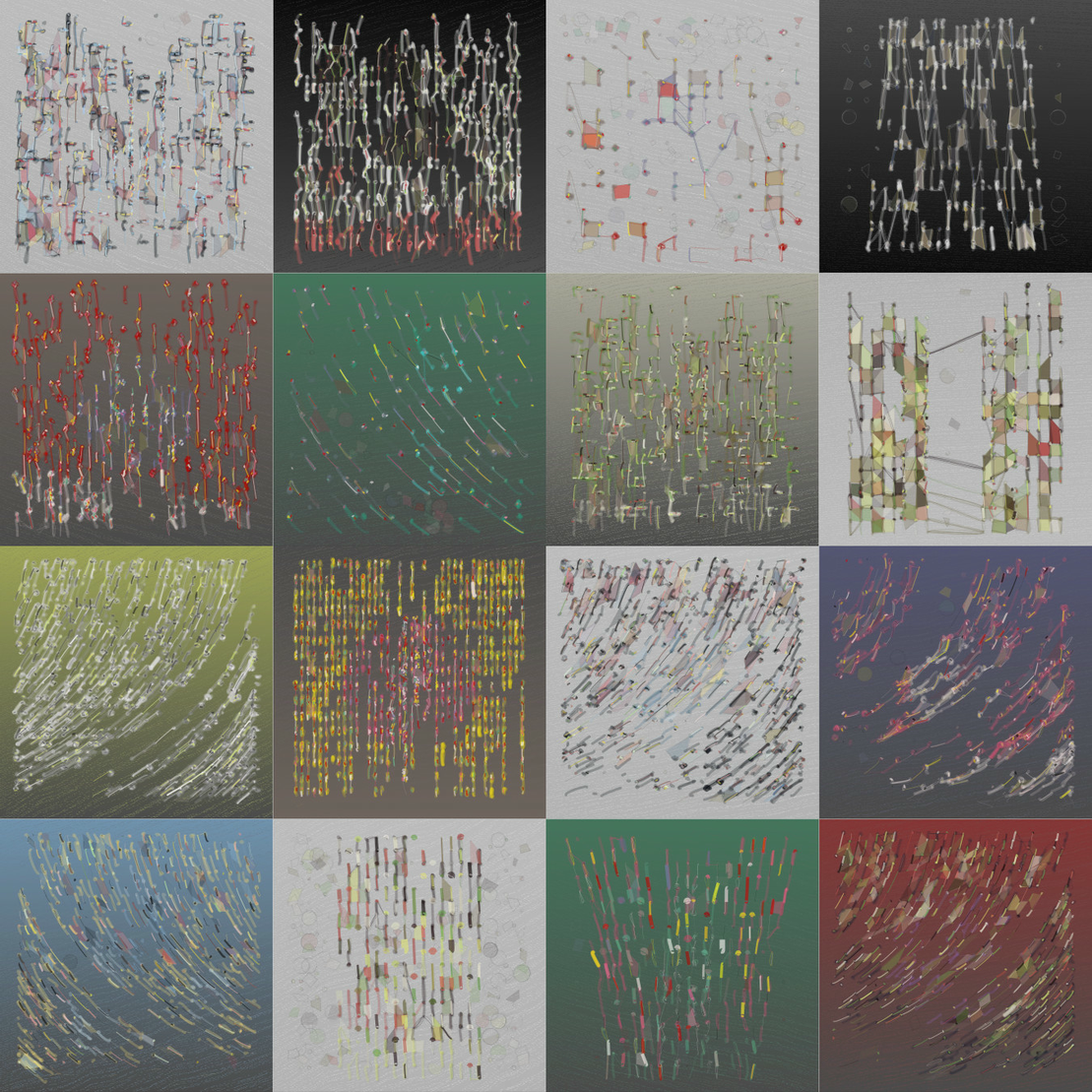
Sound jumps in UNTIL BIODIVERSITY RAINS
written by yamiburgenet
Relationship between visuals and sounds:
Biological organisms of different colors follow a path. They move forward, change shape, stop, turn. Always one after the other. At certain moments, they stretch and jump and sounds emerge.
Watch this video that summarizes the main aspects.
I. Jumps and scales
Each row of organisms generates a simple musical scale, given mainly by octave leaps. When these jumps happen higher up the canvas, higher sounds on the scale are heard, and the lower down the scale, the lower.
In the video-example, we hear the scale in C.
When several rows of organisms overlap, each row can take a different mode of the scale. If they start further to the left of the canvas, the modality descends. And to the right, it ascends.
In the video-example, we hear the scale in C (on the left) and eleven semitones, that is, B (on the right).
II. Polyphony and harmony
The more rows there are, the more different modalities can emerge. This also depends on the type of color palette of the iteration. In the range of options there are alternatives that are sufficiently harmonious and others that are closer to noise.
Dark color palettes tend to use many different modalities. Conversely, in light palettes they are combined with few modalities, thus achieving a less chaotic sound.
III. Chronometric density
Environments that are not very dense, that is, with few organism jumps in a given time, make the resulting sounds longer. Conversely, if they are very dense, the sounds are very short.
There are iterations that seek synchrony between events, through the use of quantization, and others where events appear much more freely.
IV. Orchestration
Towards the edges of the canvas, the jumps are translated into cello sounds, mainly pizzicatos. Towards the center, the piano.
From the main jumps emerges a kind of false melody played by a pseudo-theremin-synth, characterized by flyaway melodies with glissant.
V. Macroform
In the organic whole, some rows stop, both visually and from the sound aspect, and others continue. they keep moving in a game between continuity and discontinuity, until the sound mass seeks to "breathe"”. Then, it grows in volume and density, to finally articulate itself in a brief silence. Immediately afterwards, everything continues but with a new energy, where harmony has modulated. This action is the pivot that marks the shape of the art piece.
Towards the end of iterations, higher-pitched sounds and thinner visual organisms typically emerge. The audiovisual elements dissolve and reveal, a little more, the path they have built.
